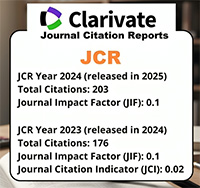Role of the Low Affinity Ige Receptor (CD23) on The Ige Response Against Ascaris Lumbricoides in Warao Amerindian Children From Venezuela
Resumen
The objective of this study was to investigate the immune mechanisms against gastrointestinal helminths involved in the production of IgE, particularly the role of the low affinity IgE receptor (CD23) in Amerindian Warao children from the Orinoco Delta, Venezuela. We studied a group of unselected (n = 159) Warao school children with high prevalence and intensity of helminthic infection and a similar non- parasitized (n = 70) control group of a “creole” community also located at the Delta of the Orinoco. The levels of total and specific anti-Ascaris IgE, determined by ELISA, were extremely higher in the Warao children (p < 0.001) compared to the control group. However, only a reduced group of these children were able to develop a clinically significant (> 0.7 PRU/mL) IgE response against A lumbricoides antigens. Circulating T helper cells (CD3+CD4+), activated B (CD20+, CD20+CD21+) lymphocytes and the expression of the low affinity receptor for IgE (CD23), determined by flow cytometry, were significantly (p < 0.001) elevated in the Warao children, particularly in those with an enhanced capacity to mount efficient specific anti Ascaris IgE responses. Strong correlations (p < 0.001) were found between the number of circulating CD20+CD23+ cells and the level of total and anti-A lumbricoides IgE. Also, a significant (p < 0.005) correlation between CD20+CD23+ and CD4+ circulating cells was observed. We conclude that A lumbricoides antigens may stimulate the production of total and specific IgE through a CD23 dependent pathway. However the different environmental and genetics factors involved in the capacity to develop efficient specific responses among the Warao population still need to be elucidated




















